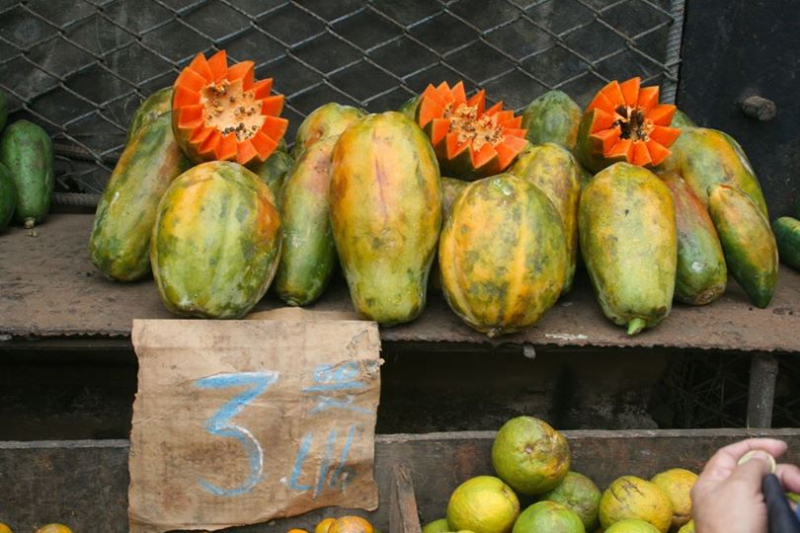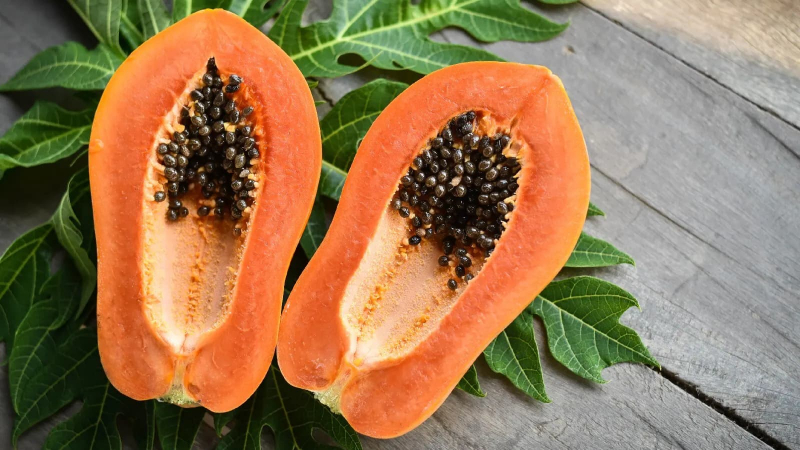Papaya

Papaya, (Carica papaya), also called papaw or pawpaw, succulent fruit of a large plant of the family Caricaceae. Though its origin is rather obscure, the papaya may represent the fusion of two or more species of Carica native to Mexico and Central America. Today it is cultivated throughout the tropical world and in the warmest parts of the subtropics. The papaya fruit is slightly sweet, with an agreeable musky tang, which is more pronounced in some varieties and in some climates than in others. It is a popular breakfast fruit in many countries and is also used in salads, pies, sherbets, juices, and confections. It is hard to resist the smooth and creamy texture of Fruta bomba or papaya. Thanks to the outstanding advantages, this fruit appears commonly in many delicious Cuban foods.
Despite growing up to 8 meters (26 feet) tall and having a palm-like trunk, the papaya plant is not as woody as the name might suggest. The fruit often has a spherical to a cylindrical shape, measures 75 to 500 mm in length or even longer, and occasionally weighs up to 9 to 11.5 kg. The extremely delicious flesh has a rich yellow, orange, or crimson hue. The numerous spherical, wrinkled black seeds adhere to the walls of the expansive central chamber. A protein-digesting enzyme called papain, which has a strong resemblance to the animal enzyme pepsin in its digestive function, is present in the unripe fruit's milky liquid. This juice is employed in the creation of a number of indigestion cures as well as in the production of meat tenderizers.











